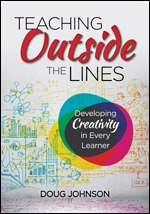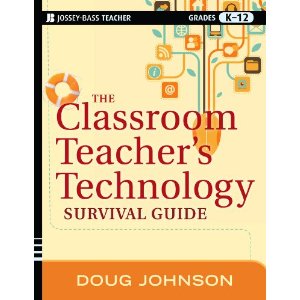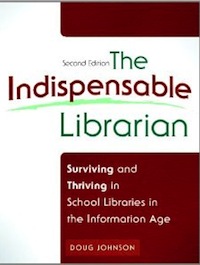BFTP: Defeating the one-right-answer mentality
 Sunday, October 9, 2016 at 05:47AM
Sunday, October 9, 2016 at 05:47AM  Like most Americans, I am thoroughly disgusted with the politics surrounding budget talks at both the federal and state level. While common sense seems to dictate both spending cuts and tax increases will be needed to put most governments back on some sort of sustainable path and not leave increasingly larger financial messes for our kids and grandkids to clean up, our politicos on both sides seem to want only "one right answer" with no compromise or creativity in sight.
Like most Americans, I am thoroughly disgusted with the politics surrounding budget talks at both the federal and state level. While common sense seems to dictate both spending cuts and tax increases will be needed to put most governments back on some sort of sustainable path and not leave increasingly larger financial messes for our kids and grandkids to clean up, our politicos on both sides seem to want only "one right answer" with no compromise or creativity in sight.
To what extent is our educational system complicit in this mentality?
I reflected on the little game I played with the grandsons on our recent road trip to the Black Hills last week:
We bought a set of Grade One Brain Quest cards to play with while driving - simple short answer trivia questions that Miles was not interested in and Paul found way too simple. So we invented a new game. Answer the question with a defensible answer that was not the one given as correct. For example: What makes the ground white when it falls from the sky? Given answer: snow. Our challenge answers: sleet, hail, frozen ground fog, flower petals, etc. (My daughter was surprised bird poop wasn't mentioned.)
I thought this was a wonderfully subversive thing for a grandfather to teach his grandsons - challenge the common "right answer." I hope Paul and Miles remember this and defend their own "correct" answers when they don't agree with the one in the text book, answer key to the test, or teacher's worksheet key. If they get a chance.
I get tickled when classroom teachers actually encourage this sort of thinking. One of my most memorable examples was my own chemistry teacher who required that in order to get an A in the class, one needed to find an error in the textbook and offer proof why it was wrong. A history teacher in one of our high schools asks students to make a correction to a Wikipedia entry that stays in place for at least two weeks. Formal debate should be a required class for all students.
One of my earliest columns (1995) was titled "Embracing Ambiguity." It began:
As a teacher, I can construct activities which either discourage or invite ambiguity in my classroom.
Let’s say my class is studying camels. If I want predictability, I would ask my class to fill out a worksheet based on information found in a textbook or taken from my lecture. The worksheet even has exactly three blanks to match the exact information for which I’m looking from my students. Easy to correct, easy to measure, done by every student in a set amount of time. My class stays in the secure world of answers I’ve determined to be right or wrong.
Let’s change the assignment a little. I will narrow the topic and ask my students to answer the question, ‘What allows camels to survive in the desert?” And this time instead of sending them to the textbook or lecture notes, they’ll head to the media center with a blank paper instead of a paper with blanks. Students might use print and electronic encyclopedias, a variety of books, the Internet, magazines, filmstrips, and phone calls to local experts.
What happens? Some students come back with a dozen facts; some with only one or two or none. Some facts are relevant; some are not. Some kids are done in 10 minutes; some need all hour. We’ve left “right” and “wrong” answers behind, and responses now are subject to interpretation, evaluation, and categorization. Now who decides what constitutes a correct answer? Hopefully, it’s not the text nor teacher, but the students themselves as a result of discussion.
It takes a special teacher to create a classroom like the second one which doesn’t just accept ambiguity and the open ended discussion it engenders, but embraces it. Some of us have been lucky enough to have had those teachers Their discussions may have been about the interpretation of poem, an incident in history, or a contradiction in science, and they didn’t end when the bell rang - excited students carried the talk into the hallways, lunchrooms and all the way home on the bus.
Ambiguity, creative thinking, challenging the " one correct answer" mindset is more important than ever. If all educators took the multiple solution approach, might our next generation of leaders be more successful in solving our problems? (I have no hope for the current crop.)
Oh, embracing ambiguity and lots of correct answers is not a bad attribute of educational leaders either.
Original post, August 13, 2011









Reader Comments (4)
On a side note, the patent we saw in our office for a toilet paper holder used the "waterfall" orientation. Just sayin' ;)
Hi Susan,
Always good to know the technical term for something! Thanks,
Doug
Doesn't this connect well to your recent post on "Library ethics for non-librarians scenarios"? There are so many gray areas when it comes to ethics.
More than 1 answer is actually common in technology as well, contrary to common believe that technology is like science with fixed outcomes. In the world of technology there are many correct answers, just with various degrees of accuracy, efficiency, and desirability.
HI Lilia,
It often boils down to priorities, even in tech. Which is your priority: security or access?
Doug